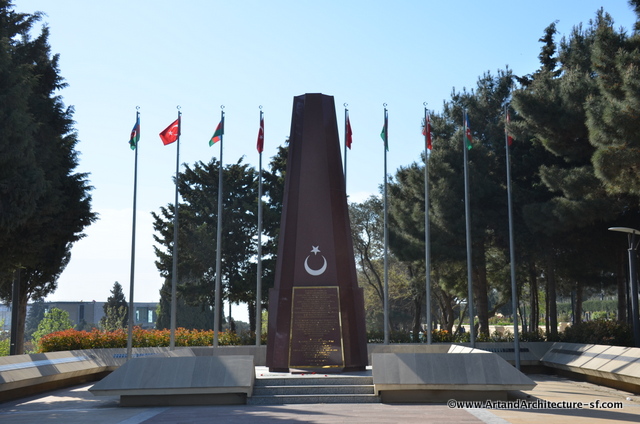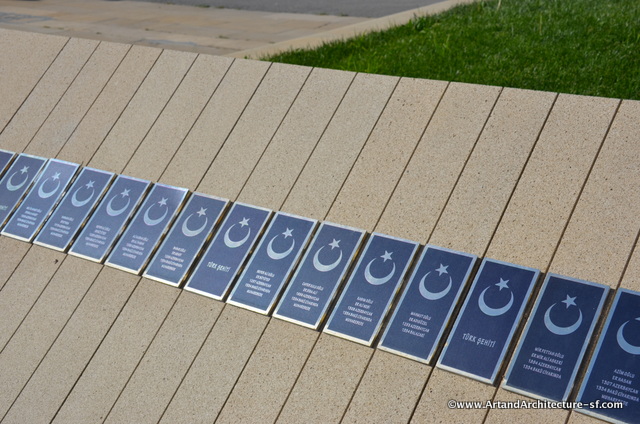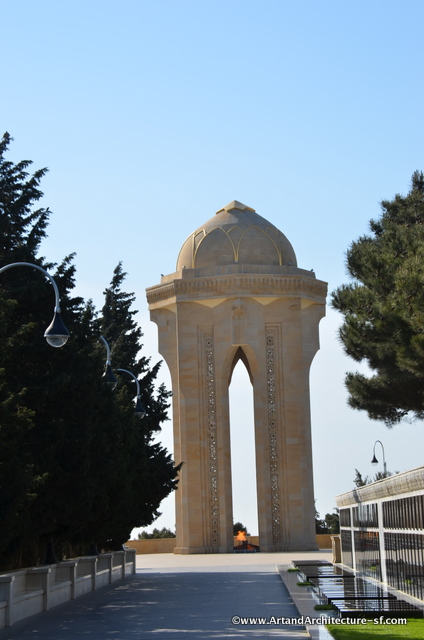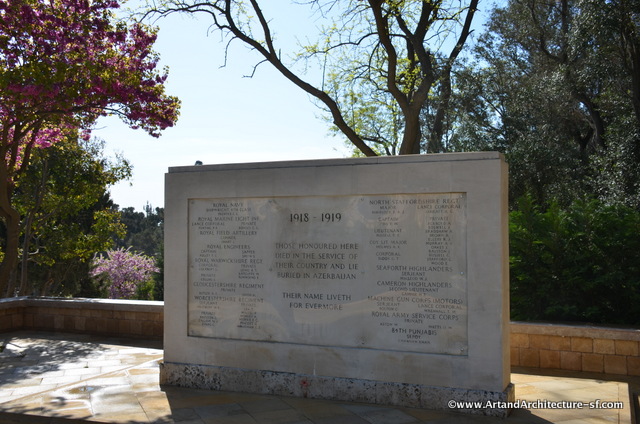May 2014
When taking the funicular yesterday we ended up at Martyr’s row. Like so many city’s around the world have, this is an area of war memorials. I waited until today to go into them as there is so much history tied up in this tiny area of grave sites and memorials.
At the top is this mosque. It represents the loaded political scene of the Caucasus region.
CAUTION: – Complicated History Lesson is about to Ensue.
I am going to start with including an older map I found, I had to add a bit to it, so I hope it helps in understanding this region without confusing too much
This entire site above the funicular was originally a Muslim cemetery with victims of the 1918 Russian Civil war. It was completely destroyed and the corpses removed when the Bolsheviks came to power. They then created an amusement park in the area. After the collapse of the Soviet Union, the amusement park was removed and the area again became a burial site for national heroes.
The monument was designed by Turkish architects Hüseyin Bütüner and Hilmi Güner. The mosque was built by the Turkish Presidency of Religious Affairs and opened in 1996. It was dedicated in 1999 with both the Turkish and Azerbaijani Presidents of the time.
In April 2009 the mosque was closed down by the Azerbaijani authorities.
Bear with me as we are continuing with the conflicts in politics here:
The eternal flame and the graves that line the right-hand side of this walkway are from Black Saturday, also known as Black January or the January Massacre.
Essentially during the breakdown of the Soviet Union, there was a flaring up of the Azerbaijani and Armenian conflict.
On January 19th, 1990, 26,000 Soviet troops entered Baku. The troops attacked protesters, firing into crowds. The shooting continued for three days. On January 22nd almost the entire population of Baku turned out to bury the dead and the country stayed in mourning for another 40 days, by staying away from work.
According to one report, 93 Azerbaijanis and 29 Soviet soldiers were killed in the street skirmishes. Other reports state that 21 soldiers were killed and 90 wounded in the fighting, however these numbers are highly disputed.
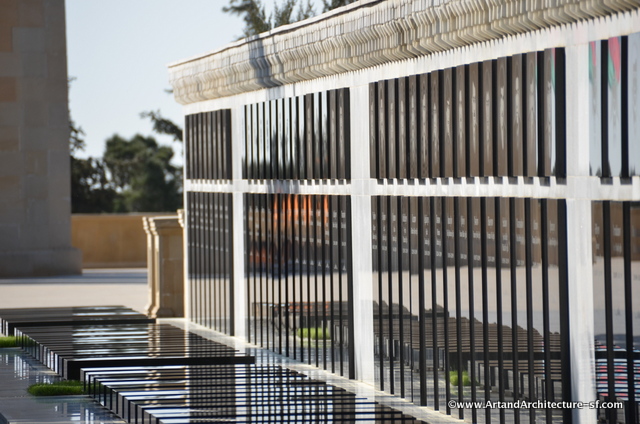 There is one more memorial on the hill.
There is one more memorial on the hill.
This memorial to British troops killed during WWI is also not without controversy. The British were sent to prevent the Turkish invasion which most Azeris supported.
In total it is estimated there are about 15,000 people buried here on Martyrs’ Lane.
This small area on the top of a hill in Baku is a prime example of how difficult it is to understand so much of the world we live in. Baku is a melting pot of history and invasion, and this little area is an amazing reminder of all of that.


